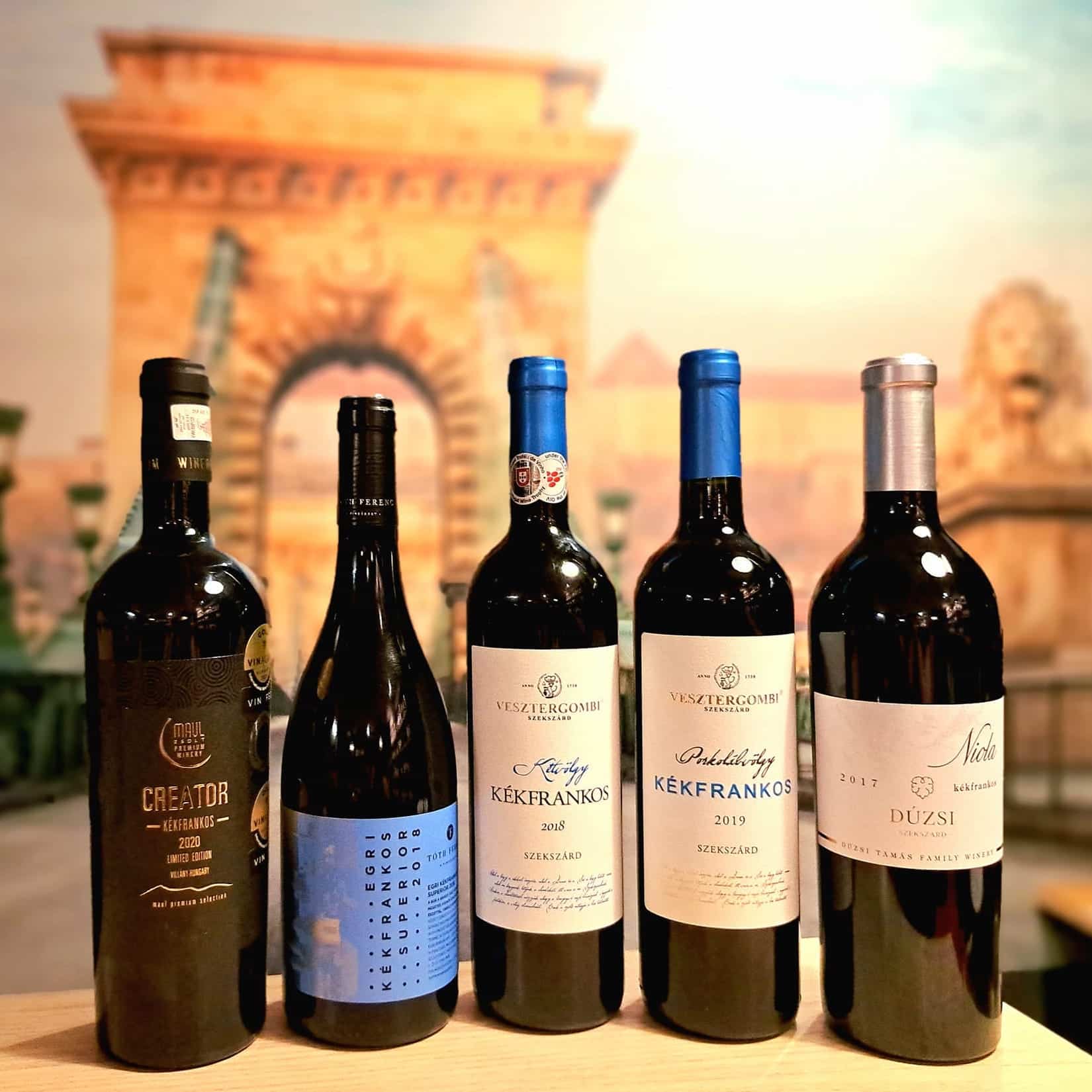10 December: International Aszú Day
The first time ever!
Tokaj Aszú is one of the greatest sweet wines of the world. Terroir, centuries old tradition, local grape varieties and the current generation of winemakers have all contributed to a matrix with the ability to stun both the average wine consumer and the professional sommelier. The 10th of December, 2017 is the first ever International Aszú Day, let’s celebrate together. The idea of the International Aszú Day came from Dániel Kézdy, an avid fan and great expert of Tokaj. Mr. Kézdy has published a book on the wine region in 2014 with the title Tokaj – People and Vineyards which is available both in Hungarian and English. He was also the initiator and organizer of Furmint Február an annual event since 2010, and Hárslevelűk Éjszakája since 2014. The two events are designed to highlight these important Hungarian varieties. It was also Mr. Kézdy who came up with the idea of the International Furmint Day to be celebrated on the 1st of February. „You might say I am biased but I am convinced that it would be a hell of a task to refute me, so I’m not afraid to declare that Tokaj Aszú is the greatest sweet wine in the world and it deserves to be put in the limelight worldwide”, says Mr. Kézdy.
Tokaji Aszú and Chinese Cuisine
The diversity of Tokaji Aszús opens up endlessly exciting possibilities in matching food and wine, just don’t be afraid to be adventurous. To celebrate the first Aszú Day the organizers have chosen some of the best known Chinese dishes to match the fruity character of younger Aszús and the more profound, richer aromas of mature examples. Considering the basic rules of food and wine matching one can find several reasons why Tokaji Aszús go well with Chinese dishes which can be spicy, hot, sweet, sour and often a combination of these basic flavours therefore to find the right wine match one needs to consider multiple factors. Chinese dishes are typically intense so the right wine needs to match their intensity. To match a sweet dish one needs a wine even sweeter, for a sour dish a wine that is higher is acidity. The heat of hot dishes is alleviated by residual sugar and sweetness also intensifies spiciness. All these factors married to the unique acidity-sweetness balance and richness of flavours of Tokaj Aszús make them excellent choices to accompany Asian dishes and the diversity of different terroirs and vintages provides us with wide range of options to find the right wine for our favourite dishes.
Beijing duck with young Tokaji Aszú (less than 10 years old)
The skin is crispy, while the flesh under the skin isreally juicy in this classic dish. The meat is usually sliced on the dining table, and the thin slices are accompanied by raw, fresh, sliced cucumber and spring onion, crepes and thick, sweetish sauce. A fruity, vibrant younger Tokaji Aszú would perfectly much with the spicy, not too hot sauce, which gives the main aroma of the dish.
Pair it with Grand Tokaj Tokaji Aszú 5 puttyonyos, 2013
Stunning complexity on the nose: botrytis from the aszú berries, peach, orange zest, walnut brittle, fig and exotic flowers, with a touch of dill at the end. Extremely clear fruitiness on the palate, orange, birch, pear and apricot notes combined with flavours of white chocolate and vanilla as well. The refined acidity keeps the structure firm, long, yet rounded. The mouth is full of lime and grapefruit and some matured, coffee notes during the prolonged finish. A genuine great wine of Tokaj at the beginning of its development with great potential.
Sweet and sour pork with matured Tokaji Aszú (older than 10 years old)
This traditional recipe comes from the 18th century. The pork is cut into cubes, marinated in vinegar, rice wine, sugar and soya sauce, then fried in oil. The meat is sticky, sweet like caramel, therefore it matches well with the complex, deep aromas of a matured Tokaji Aszú.
Pair it with Pajzos Tokaji Aszú 5 puttonyos, 2006
Golden, young Aszú with a supremely refined inner world. Citrus and meadow flowers abound in the nose. The wine lover senses caramel, citrus and dried fruits, and white horehound on the palate with the discreet appearance of buttery, almond notes of barrel ageing. The typical minerality of Tokaji wine brings a slight saltiness to this drinkable wine thanks to its delightful acids. Elegant this promises to be a great wine with serious ageing potential.
Enjoy & share it!
On the 10th of December, 2017 on the first ever Aszú Day we want to turn the spotlight on this unique and special Hungarian sweet wine. Be an ambassador of Tokaj Aszú by tasting it on Aszú Day. Buy a bottle of Tokaj Aszú, ask for it in your favourite restaurant, share a bottle with friends or cook something matching its rich flavours and share the experience with others. #aszuday
Facebook: facebook.com/aszuday
Instagram: instagram.com/aszuday/
Website: aszuday.com
Photo credit: Furmint Photo
If you need more info on Tokaj…
The Tokaj wine region is situated in North East Hungary at the foothills of the Zemplén Mountains, along the rivers Bodrog and Tisza. The world’s first delimited wine region since 1737, the regulations were designed to protect local values and they prohibited the import of grapes, must or wine to the region. The soil is of volcanic origin (andesite, liparite, quartz) and this is reflected in the wines which show a certain minerality and tightness. The climate is continental with long and dry autumns. One of the defining features of the wine region is the multitude of microclimates and soils in the various vineyards resulting in wines of great variety and distinct characters.
Thanks to the special microclimate of the wine region the onset of Botrytis cinerea or noble rot responsible for the shrivelling of berries is an almost certain occurrence each year though admittedly with varying degrees of intensity. In autumn the diurnal alternation of morning fog created by the rivers and dry sunny days is conducive to the production of aszú berries.
Botrytis punctures the grape skins thereby assisting the evaporation of liquid matter and by doing so increasing the concentration of sugar, acidity and flavour compounds. However this is not a uniform process so the shrivelled berries have to be picked one by one over a prolonged period. Needless to say this is an extremely labour-intensive process; even experienced pickers can gather only 6-7 kilograms a day and the same vine might have to be revisited 4-5 times in one harvest period.
Once the liquid matter has evaporated the aszú berries are macerated in the fermenting juice or base wine of the same vintage for 24-48 hours with regular stirring for proper extraction. Once the maceration is done the aszú paste is removed, pressed and the resulting must is fermented to arrive at Tokaj Aszú. Post-fermentation residual sugar content must reach at least 120 gramm/liter.
Properly stored Tokaj Aszús can be enjoyed for several decades. A properly stored 20 year old Aszú is still magnificent with slightly transformed flavours, added complexity; it’s easy to see why they are so higly regarded by connoisseurs. However tasting younger Aszús with their more springlike, fresher and brighter profile provides just as much pleasure.
On Tokaj wine styles read our Vocabulary section:
https://www.hungarianwines.eu/vocabulary/







Trackback: funnyvideos